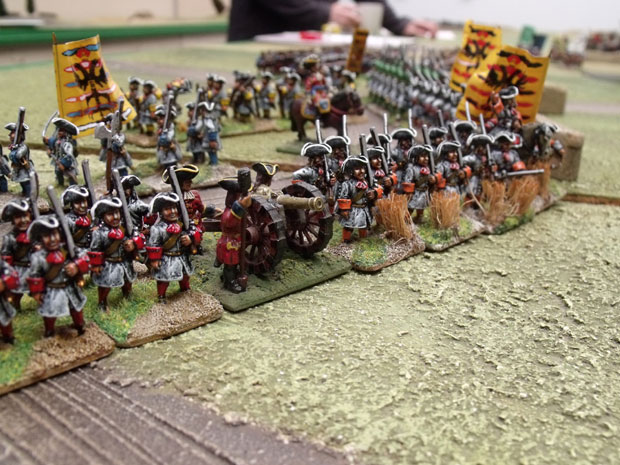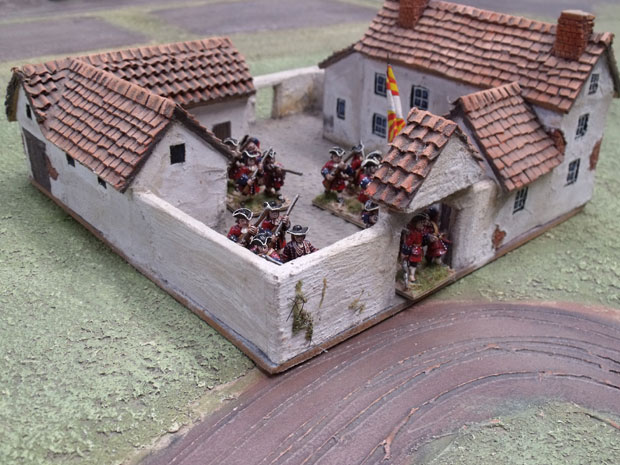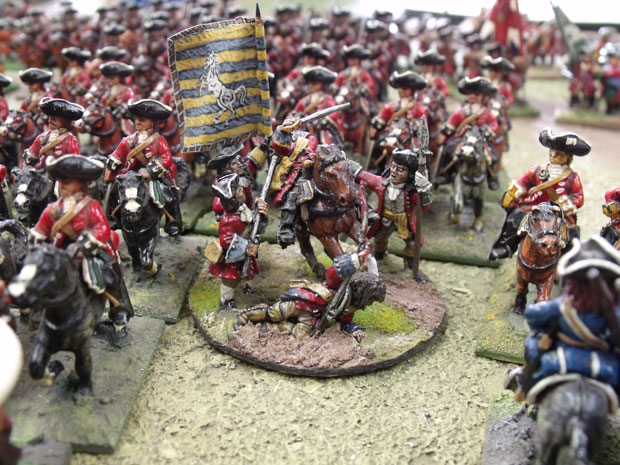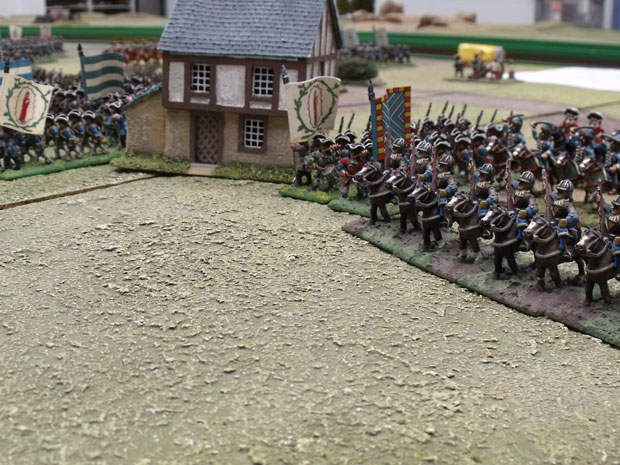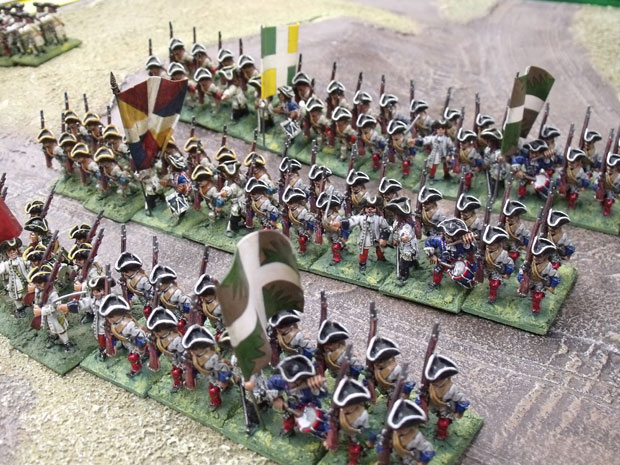Recently at the Wargames Holiday Centre we’ve been working on our Marlburian period rules. These have been around for over twenty years and were drafted by my good friend Mike Ingham. Mike had a keen interest in the wars around this time in history and as a result decided to add this to the Wargames Holiday itinerary.
The battlefield of Blenheim as the battle gets under way
Now with over six thousand figures in the collection we can quite comfortably offer the key battles surrounding the period, our choice for this year are Blenheim, Malplaquet, Oudenarde and Ramillies.
A view of the battlefield from the Allied position
During the last month we took an opportunity to work on these rules and hopefully improve on them. At present they are extremely playable but would they fully reflect the period. There is a lot of “formation depth” in this period, with Cavalry and infantry providing direct support for each other. This differs to the rules regarding Napoleonics, where the cavalry are not quite so affected by the movements of the infantry and vice versa.
Bavarian Leib Battalion takes up residence
Manoeuvre is fairly straight forward, troops can form column, a single stand wide by four or five deep, cavalry form double lines, line or single base wide column. Movement ranges depend on the formation.
Swabian regiments and their artillery support.
Our firing mechanics are quite straight forward, all stands roll one dice, the range determines the required “to hit” score on the die. Melee follows a similar mechanic with a die rolled for each stand in the melee. If the target is in hard cover, wearing cuirass or in open order (artillery) then a saving throw is allowed, generally a “six” or in the case of hard cover a “five or a six”, so fairly simple.
A Swiss Mercenary battalion taking advantage of hard cover.
The troops of the period in our rules have national characteristics to take into consideration, for instance, the British, Dutch and Danish are “shock” cavalry, their infantry also have a better fire discipline and therefore will roll an additional die in firing. The other nationalities mounted troops are what we term “Firing Cavalry”. The shock cavalry have no firing capability, but have the potential to deliver a lot more damage on the first round of combat. The Firing cavalry have a shooting capability, denoted in the name and will fight less effectively in the first round of a melee with Shock cavalry. The casualties are removed as a base becomes marked off on the casualty charts, this is two figures in cavalry regiments and four in infantry regiments. The reduction in bases obviously affecting the fighting capability of the unit.
Regiments of British Horse, shock cavalry forcing their way through the French centre.
Melee is similar to firing, range bands provide hits on four and over, or fives and over at long range becomes sixes. Cuirassier have a saving throw in melee of a six.
Placement of Commanders, be they Wing, Army or local, can really affect the stability of your formations.
The performance of units can be further reduced due to “Disruption”, this reduces the amount of dice rolled per regiment and the factors are gained through a variety of means. Units doubling for instance, crossing difficult terrain or having routed and rallying.
Bavarian Infantry regiments advancing in line.
All units have a Morale rating dependent on their class. Morale is tested using the loss of casualties, a base and friendly routs etc. adding pluses to your morale score, an average die score is then deducted with Generals and support providing reductions in your score. The result is compared to the Morale rating of the tester, if the number exceeds this, the unit becomes “Shaken” a further variance will see the unit rout.
A French infantry battalion, with supporting ranks.
The game really flows well and is extremely playable. I hope to present some battle reports in the near future.




